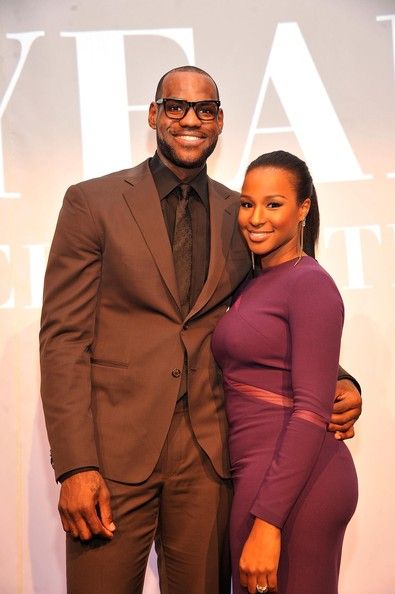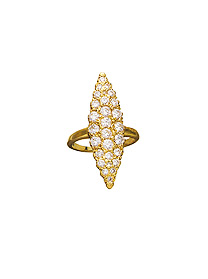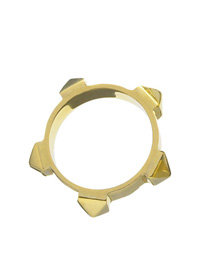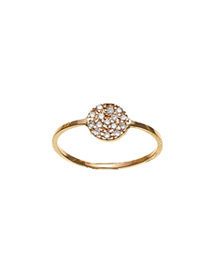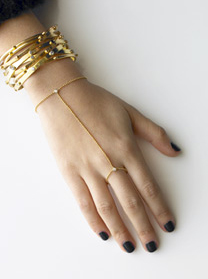The elaborate eye makeup worn by Queen Nefertiti and other ancient
Egyptians was believed to have healing powers, conjuring up the
protection of the Gods Horus and Ra and warding off illnesses. The
ancient Egyptians regarded beauty as a sign of holiness and were the engineers of the beauty industry as well as the concept beauty as Medicine. Everything the ancient Egyptians used had a spiritual aspect to it, including cosmetics, which is why cosmetics were an integral part of their daily lives. In tombs, many cosmetic palettes
were found buried with the deceased as grave goods which further
emphasized the idea that cosmetics were not only used for aesthetic
purposes but rather magical and religious purposes.
 |
| The strong, infamous & beautiful Nefertiti in her signature liner. |
Why the ancient Egyptians used cosmetics
Ancient Egyptians wore cosmetics regardless of gender or status, as
they believed that cosmetics had magical power. They paid extra
attention to eye makeup and they usually lined their eyes with a black
galena,
kohl (black eyeliner), that was placed in small
kohl containers and applied with a wooden stick, creating an almond-shaped eye. The almond-shaped eye resembles the falcon eye of the God Horus. The eye of Horus was believed by the Egyptians to have magical protective powers from the myth of the battle of Horus as revenge for his father Osiris,
where it was said he lost his left eye which was later magically
restored (Mannichie 34). Therefore, the ancient Egyptians wore the black
kohl and used green eye paints under their eye to ward off evil spirits
and as a way to keep their eyes protected from eye diseases. The use of
eye paints played an important role as well in the afterlife of the
ancient Egyptians. “Before presenting himself (the deceased) at the
tribunal in the ‘Hall of Justice’ the candidate must purify himself,
dress in white garments, make up his eyes and anoint himself. Only then
may he enter the realm of Osiris” (qtd. in Sacred Luxuries 136). The
deceased had to line his eyes with kohl in order for him to face the
judgment of Osiris and move on to the afterlife. Moreover, ancient
Egyptians, especially royalty, wished to preserve their youthfulness and
be always depicted in an ideal state in art as part of their divine
nature. They used oils such as castor oil, sesame oil
and Moringa oil in their daily skin care regimen to fight wrinkles
(Personal Hygiene and Cosmetics). Their favorite colors were black and
green.
Chemistry of ancient Egyptian cosmetics
The two main forms of eye makeup were green eye paint and black
kohl. The green eye paint was made of malachite, a green carbonate of copper, and the black kohl was made from a substance called galena, a dark grey ore of lead. The malachite was used in the early predynastic period, whereas galena was introduced in the late predynastic period (Lucas 41). Kohl has two components: laurionite and phosgenite. These two minerals were not readily available in Egypt, which means that the ancient Egyptians must have used wet chemistry in order to synthesize them by filtering of rock salt and natron (Spotts). Facial makeup included stain for cheeks and lips that was produced from red ochre
from naturally colored clay that was mined and washed then dried in the
sun or burnt to achieve the red pigment (Egyptian Make up). Henna, a naturally occurring plant, was used by the ancient Egyptians to paint their nails and dye their hair.
Medical uses of ancient Egyptian cosmetics
The ancient Egyptians were not entirely misguided in believing that
kohl would prevent eye infections because it actually did prevent an
ocular infection that was caused by the flooding of the Nile. The lead-based substances in the kohl promoted the production of nitric oxide in their skin, which helped strengthen their immune systems against diseases ("How the Pharaohs Fought Ocular Infection"). The soot
in kohl helped in reducing the damaging effects of sun glare on their
eyes. The ancient Egyptians created a remedy for burns by mixing the
cheek and lip stain and other remedies for improving skin with red
natron, northern salt and honey
(Mannichie 134, 138). However, the ancient Egyptians strongly believed
that the healing effects of these cosmetics were magical rather than
medical.
Thousands of years ago, ancient Egyptians wore eye makeup, believing
that the gods Horus and Ra would protect wearers of the makeup against
several eye illnesses and skin ailments.
It was no superstition, reported scientists from France’s Pierre and
Marie Curie University in the journal Analytical Chemistry on Jan. 15,
having found medical properties in the makeup.
The scientists performed chemical analysis involving scanning
electron microscopy and quantitative X-ray diffraction for 52 makeup
samples preserved in the Louvre Museum in Paris.
The researchers found the makeup was prepared by mixing together four
lead minerals—the dark galena (lead sulfide) and the white cerussite
(lead carbonate), phosgenite (lead chlorocarbonate), and laurionite
(lead chloride hydroxide).
Very small concentrations of lead ions are known to react with the
skin and stimulate the overproduction of nitrogen monoxide (nitric
oxide). This molecule is an important biological messenger in mammals.
One of its functions is in stimulating the immune defense system, said
the researchers in their report.
“One may argue that these lead compounds were deliberately
manufactured and used in ancient Egyptian formulations to prevent and
treat eye illnesses by promoting the action of immune cells,” they
wrote.
The rare phosgenite and laurionite are not found in or near Egypt,
and ancient texts suggest that they were synthesized as medicines.
Cosmetic palettes and jars
Cosmetics palettes were used to grind makeup. The earliest examples
were rectangular in shape and date back to 5000 BC (Cosmetic Palette).
The palettes later adopted a rounder shape like the
Narmer palette. King Narmer’s palette
was the earliest piece of its kind. It has decorations of the King
smiting the enemies of Egypt and the unification of Upper and Lower
Egypt, as well as a cavity for the grinding of cosmetics, making it a
double purposed palette. These later developed into fish shaped
palettes. They might have chosen the fish shape as the fish was a symbol
of resurrection and new life. The fish shaped palettes were usually
adorned with precious stones for royalty. These palettes have developed
into baboon shaped containers to hold the kohl which held symbolic meanings for the ancient Egyptians.
Source
























